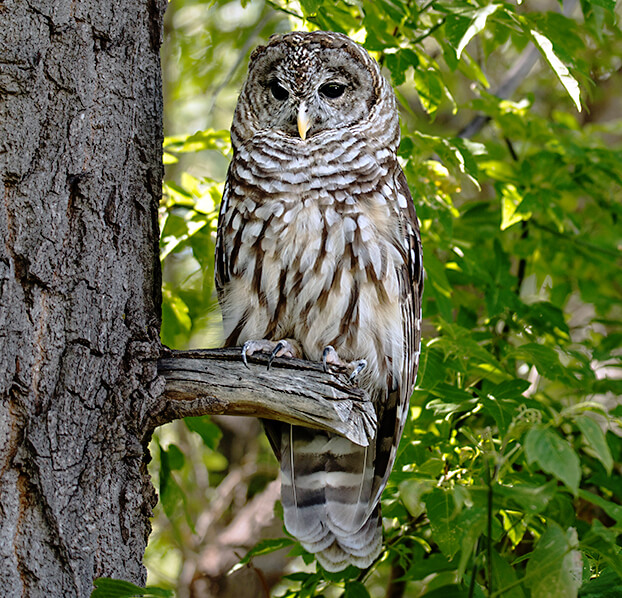
Species Information
Northern Spotted Owl

| Status |
Threatened Species: species that are in danger of becoming endangered or extinct in the near future. |
| Listed | June 26, 1990 |
| Family |
Strigidae (Owl) |
| Description | Medium-sized, dark brown with dark eyes, white spots on head and neck |
| Habitat | Old-growth and mixed old-growth/mature forest |
| Food | Carnivore that preys on small mammals, birds, reptiles and insects |
| Reproduction | Clutch of two eggs |
| Threats |
Logging or loss of habitat |
| Range | California, Oregon, Washington and British Columbia |
The Northern Spotted Owl (Strix occidentalis caurina) is a medium-sized owl that inhabits old-growth forests of the Pacific Northwest region of North America. It is a nocturnal and monogamous species, with males typically larger than females. The owl has prominent mottled brown, white and black markings on their chest and back, with a barred tail and yellowish eyes. Their diet consists of small mammals, such as voles, mice and squirrels, as well as birds, reptiles, amphibians and insects.
Northern Spotted Owls are currently listed as threatened under the Endangered Species Act due to loss of habitat from logging, development, and other land uses. They require large tracts of old-growth forest for nesting, roosting and foraging. In order to protect the species, some areas have been set aside as designated critical habitat. The US Fish and Wildlife Service has also enacted regulations to protect the Northern Spotted Owl, including a ban on the use of certain pesticides and a requirement to create and maintain buffers around occupied habitat.
